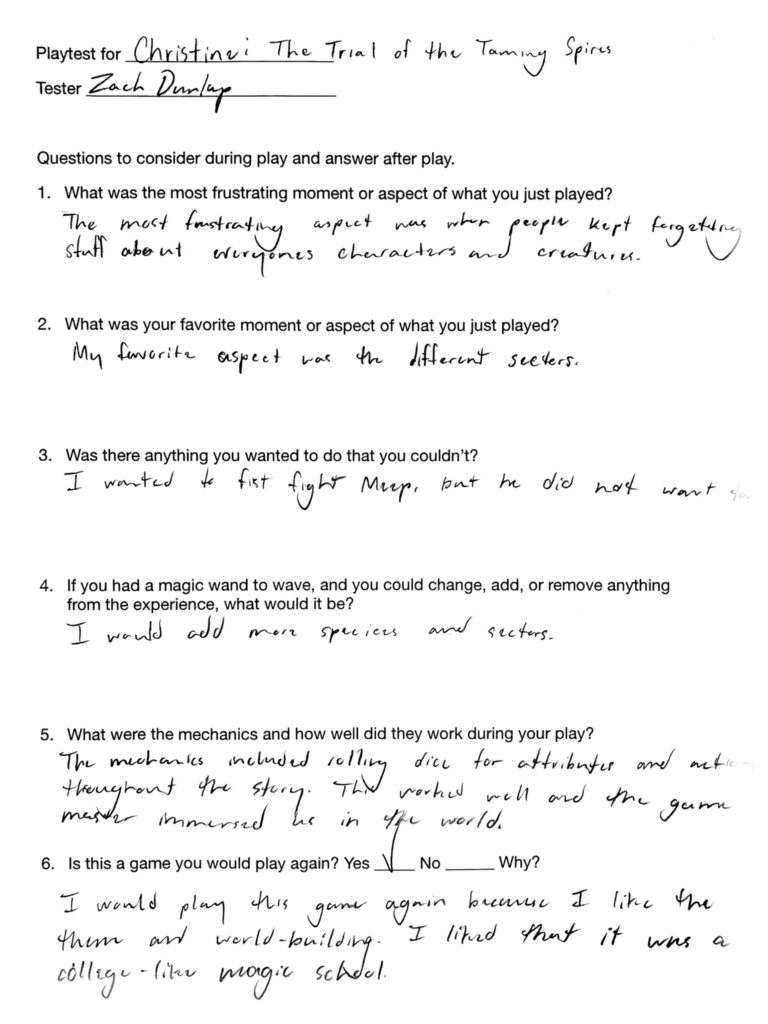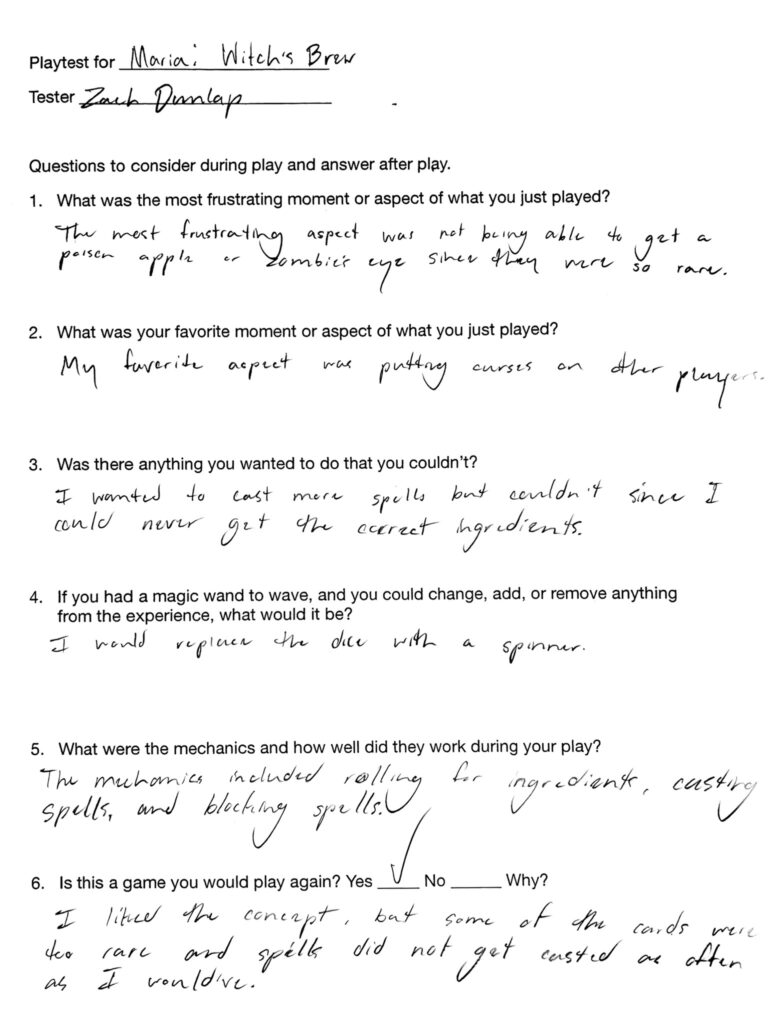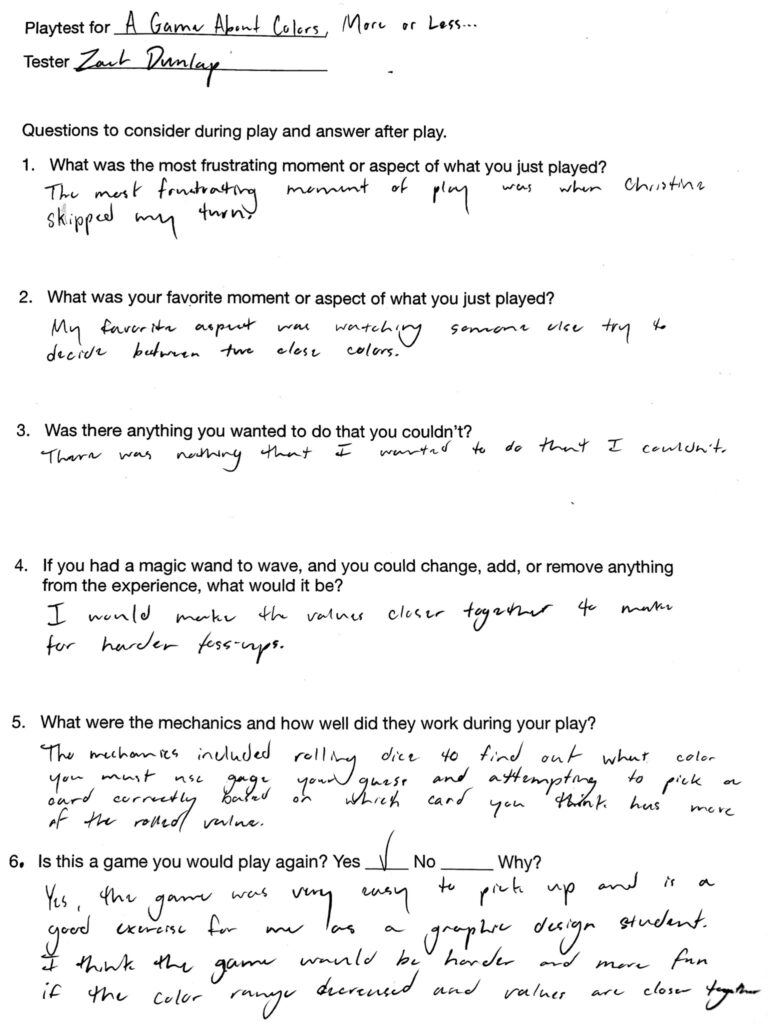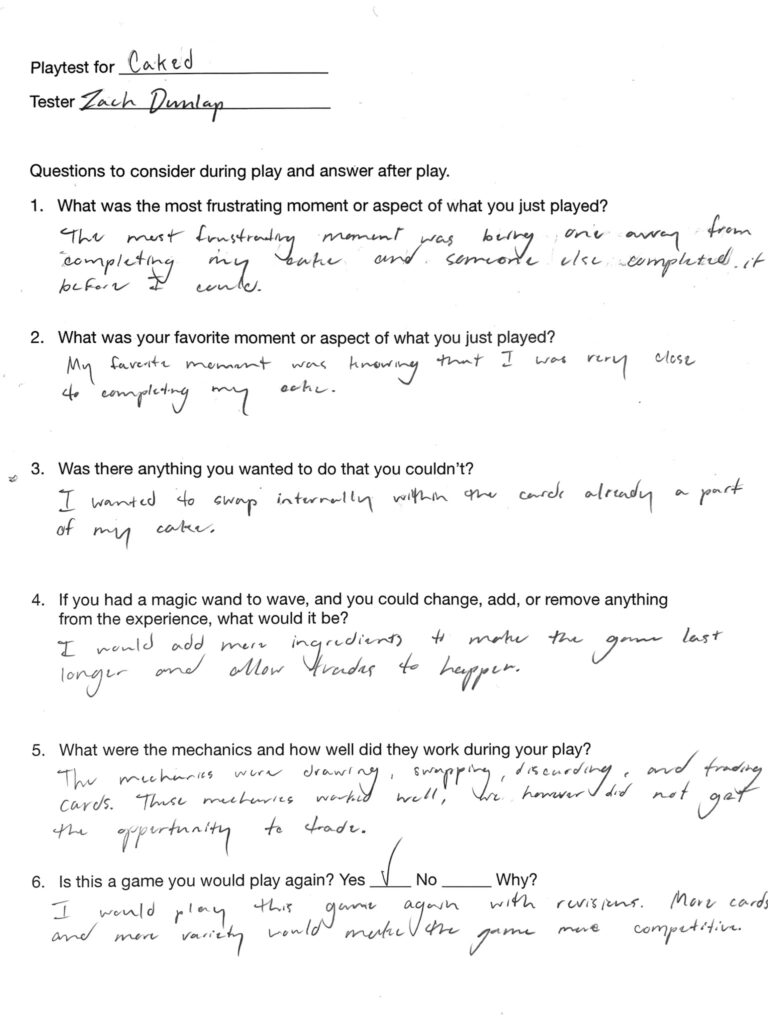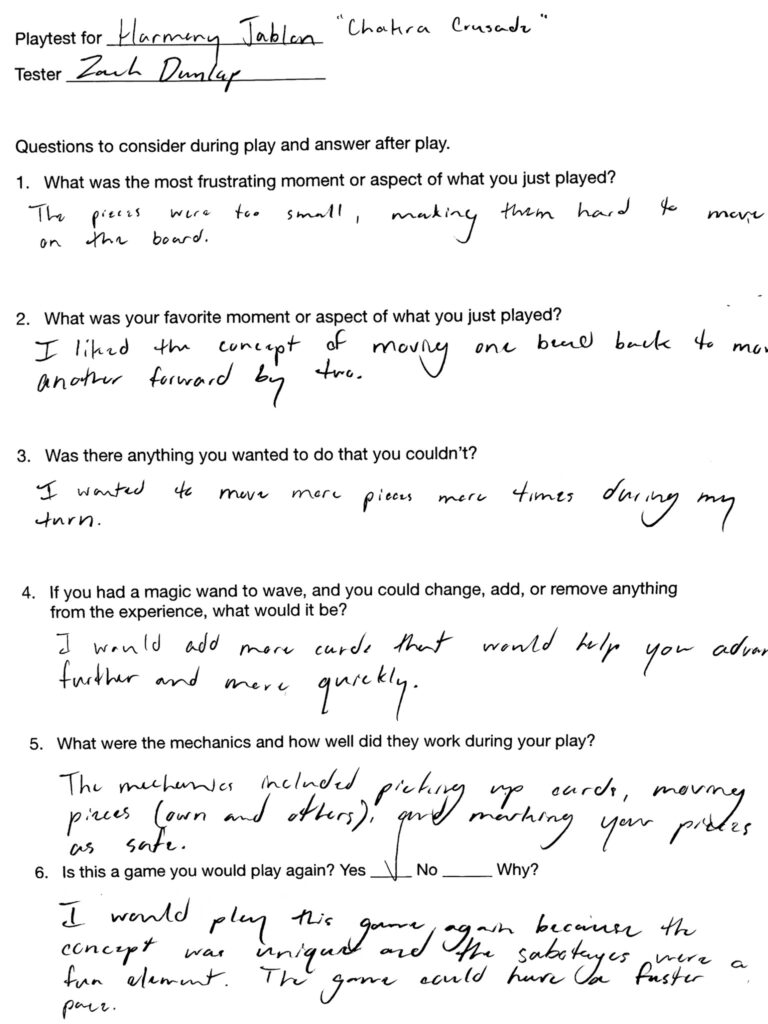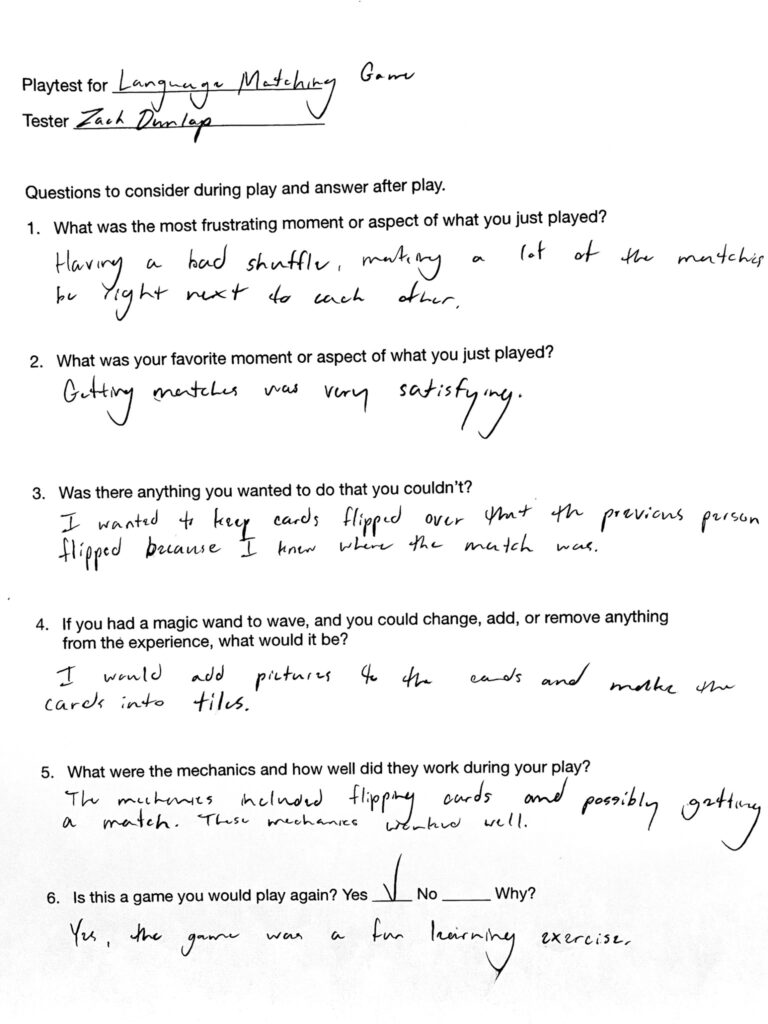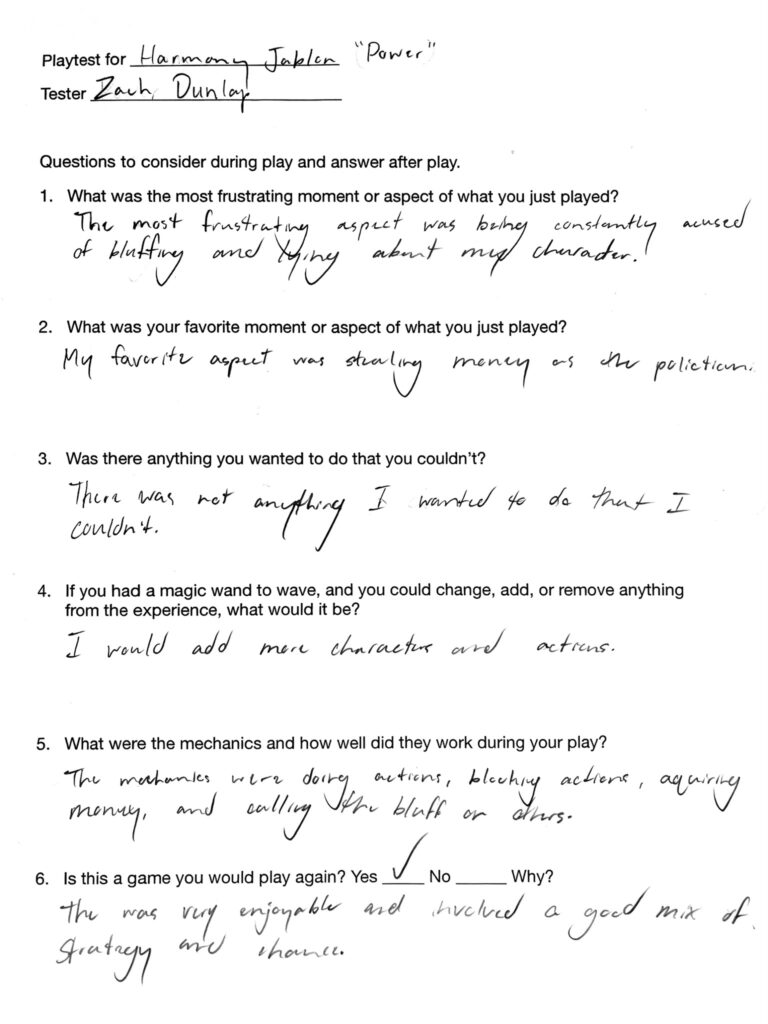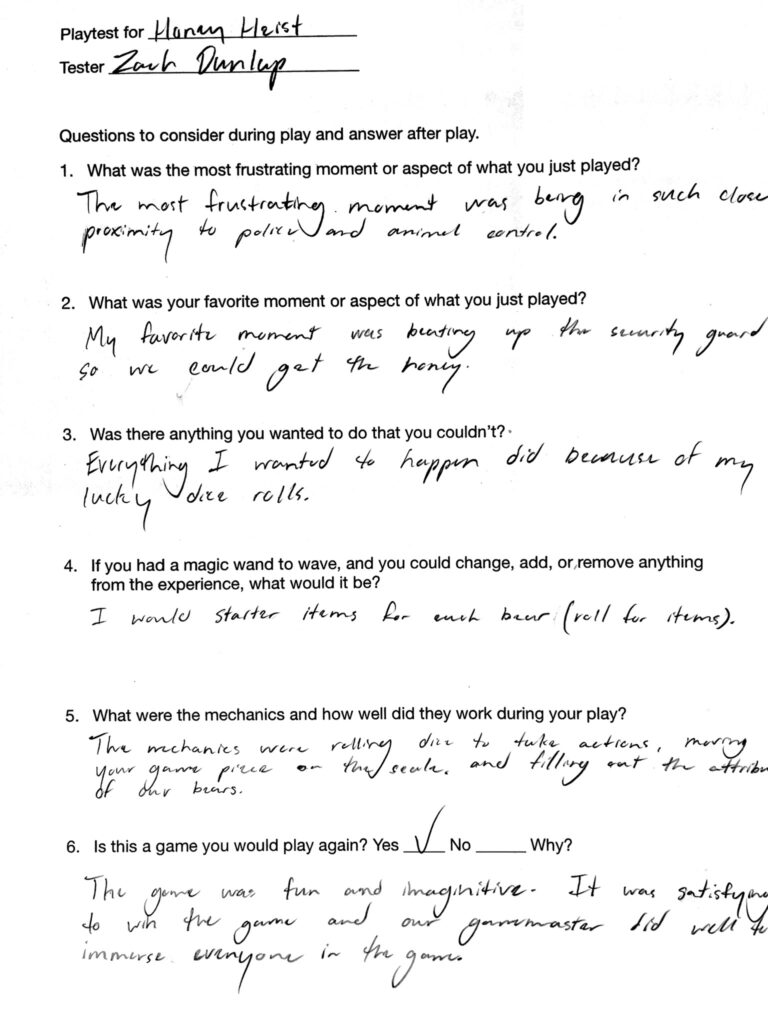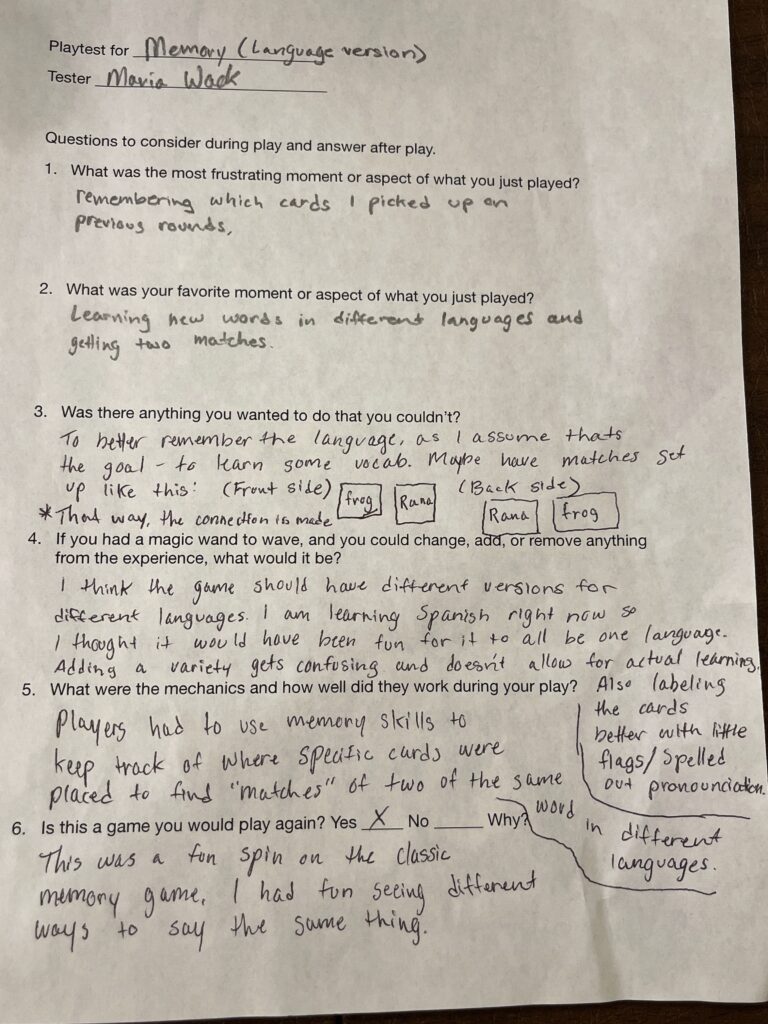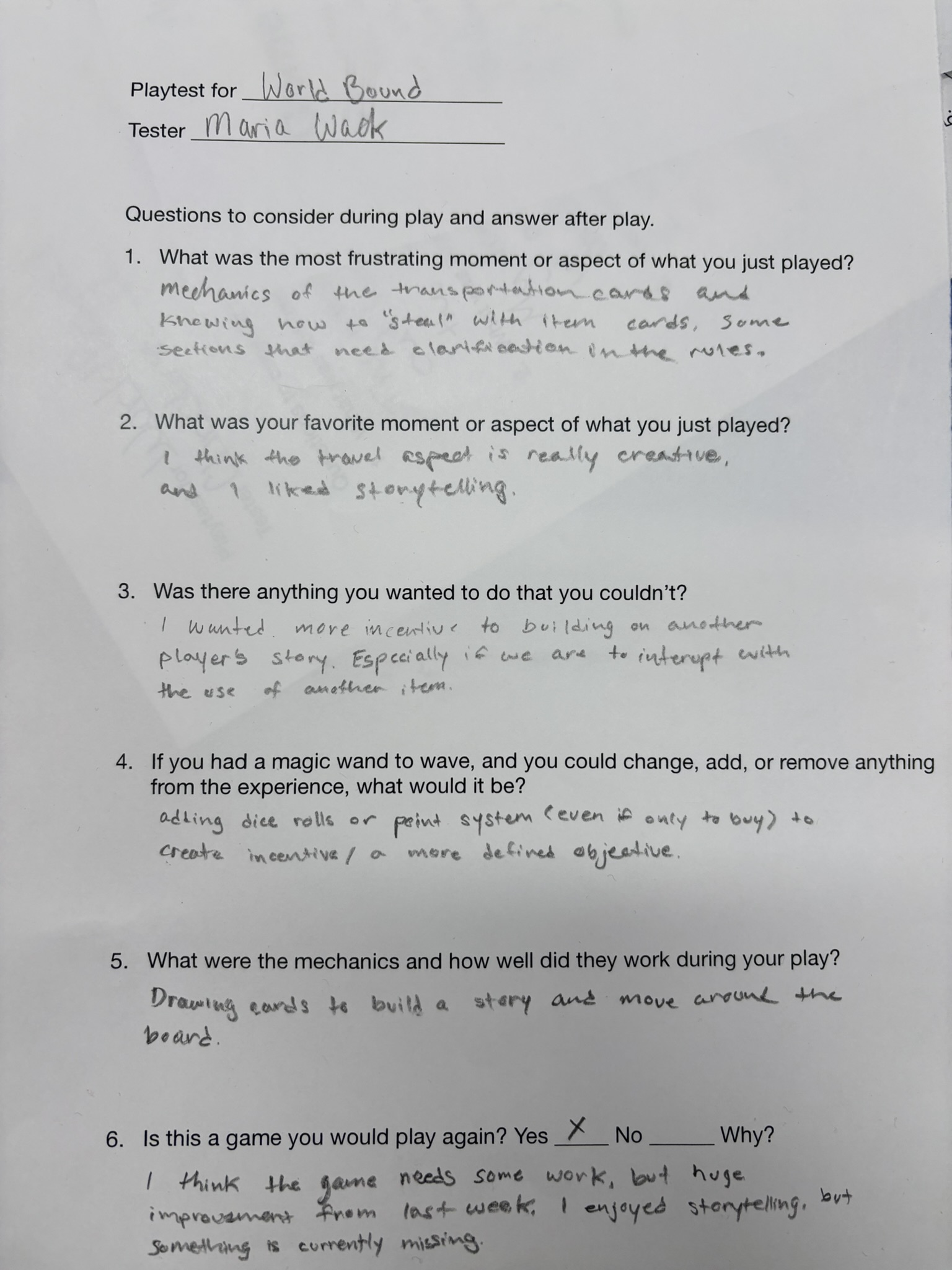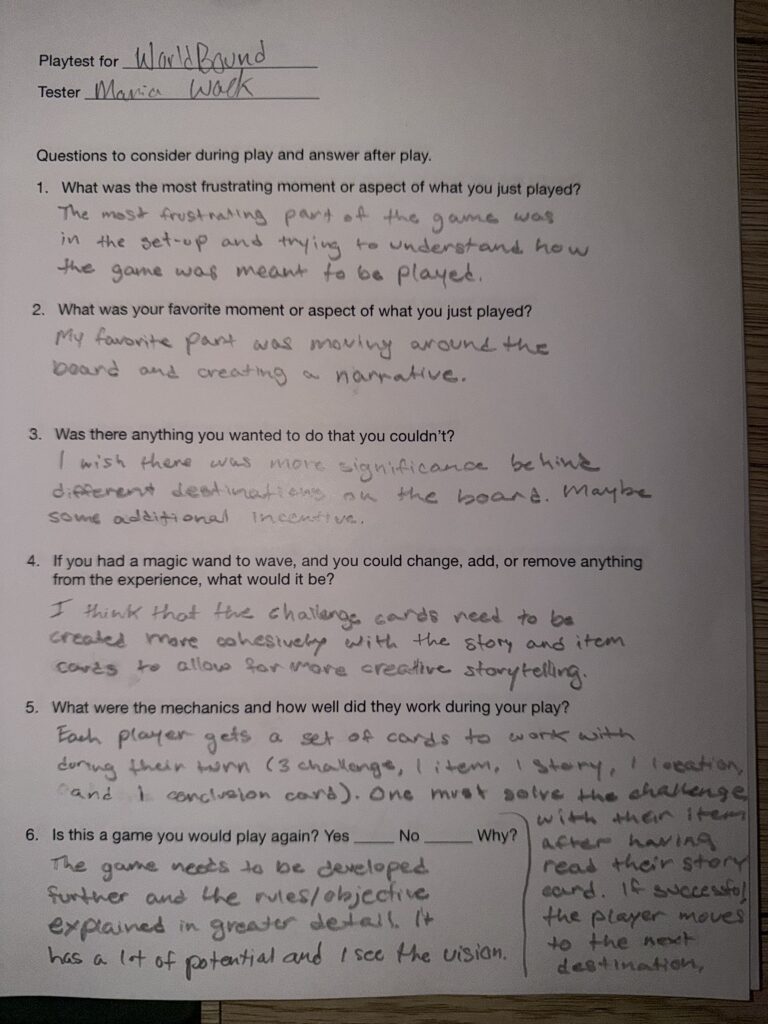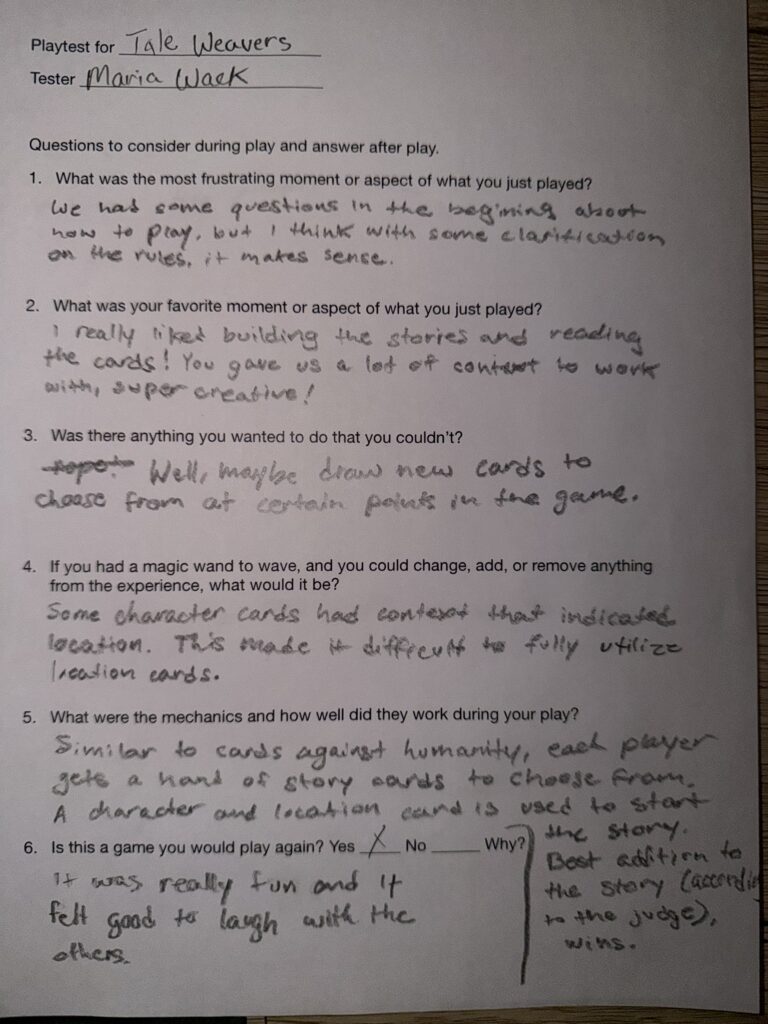Playtest Questions: The Trial of the Taming Spires, Witch’s Brew
Playtest Questions: A Game About Colors, More or Less…, Caked
Playtest Questions: ESPN Fantasy Football
Playtest Questions: Chakra Crusade, Language Matching Game, Power, Honey Heist
Playtest – Honey Heist
Playtest – Memory Language Game
Playtest – Trick-or-Treat
Playtest – Chakra Crusade
Playtest – World Bound Revised
Playtest – World Bound
Playtest – Tale Weavers
Settlers of Catan Playtest – Week 5
Playtest Questions: Catan
Catan is a board game in which players build roads, settlements, and cities to help reach 10 victory points by using dice rolls, currency gained by owning settlements and cities, and using development cards to one’s advantage.
- Was it fun?
Catan was very fun. I was honed in on expanding my settlement and gathering resources.
- What were the player interactions?
Player interactions included collecting resources according to the number rolled, buying buildings or development cards, trading with other players, robbing other players, and getting robbed by other players.
- How long did it take to learn?
It surprisingly only took about 10-15 minutes to learn. It seemed like a lot at first since the setup took a good bit of time.
- What was the most frustrating moment or aspect of what you just played?
The most frustrating aspect was when multiple dice rolls in a row granted me nothing in resources.
- What was your favorite moment or aspect of what you just played?
My favorite aspect was being able to rob other players and hinder how many resources they would get in future turns.
- Was there anything you wanted to do that you couldn’t?
I wanted to play my development cards in the same turn I bought them in.
- If you had a magic wand to wave, and you could change, add, or remove anything from the experience, what would it be?
I would add the ability to play your development cards in the same turn you bought them in.
- Is this a game you would play again?
I would 100% play Catan again. The game feels like it can have thousands of outcomes, which means every game will be unique. Each game would also be unique since the numbers that are placed on the board are random, so your strategy from one game could be wildly different than the next. I got really into building my settlement to be the strongest it could be.

